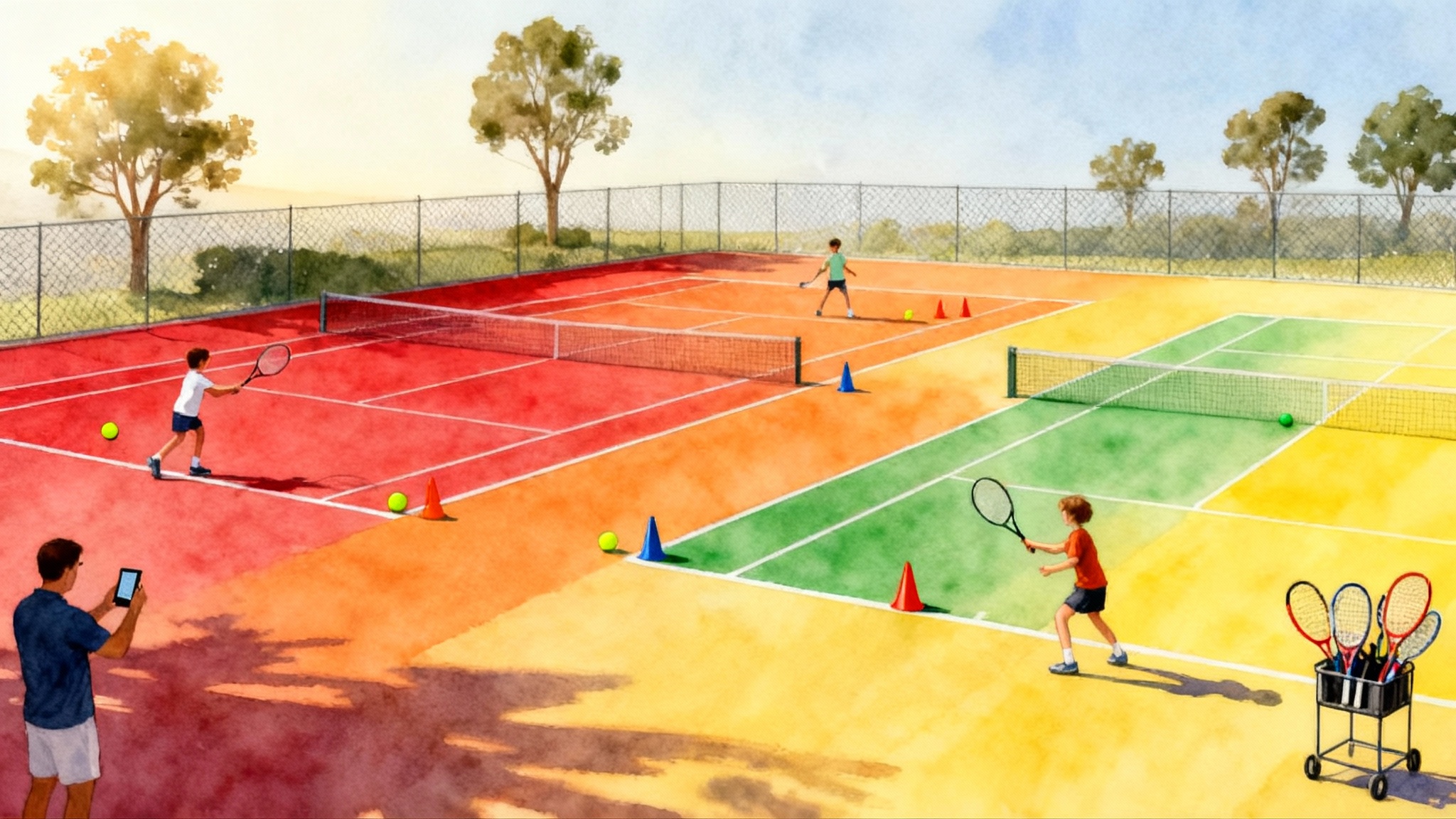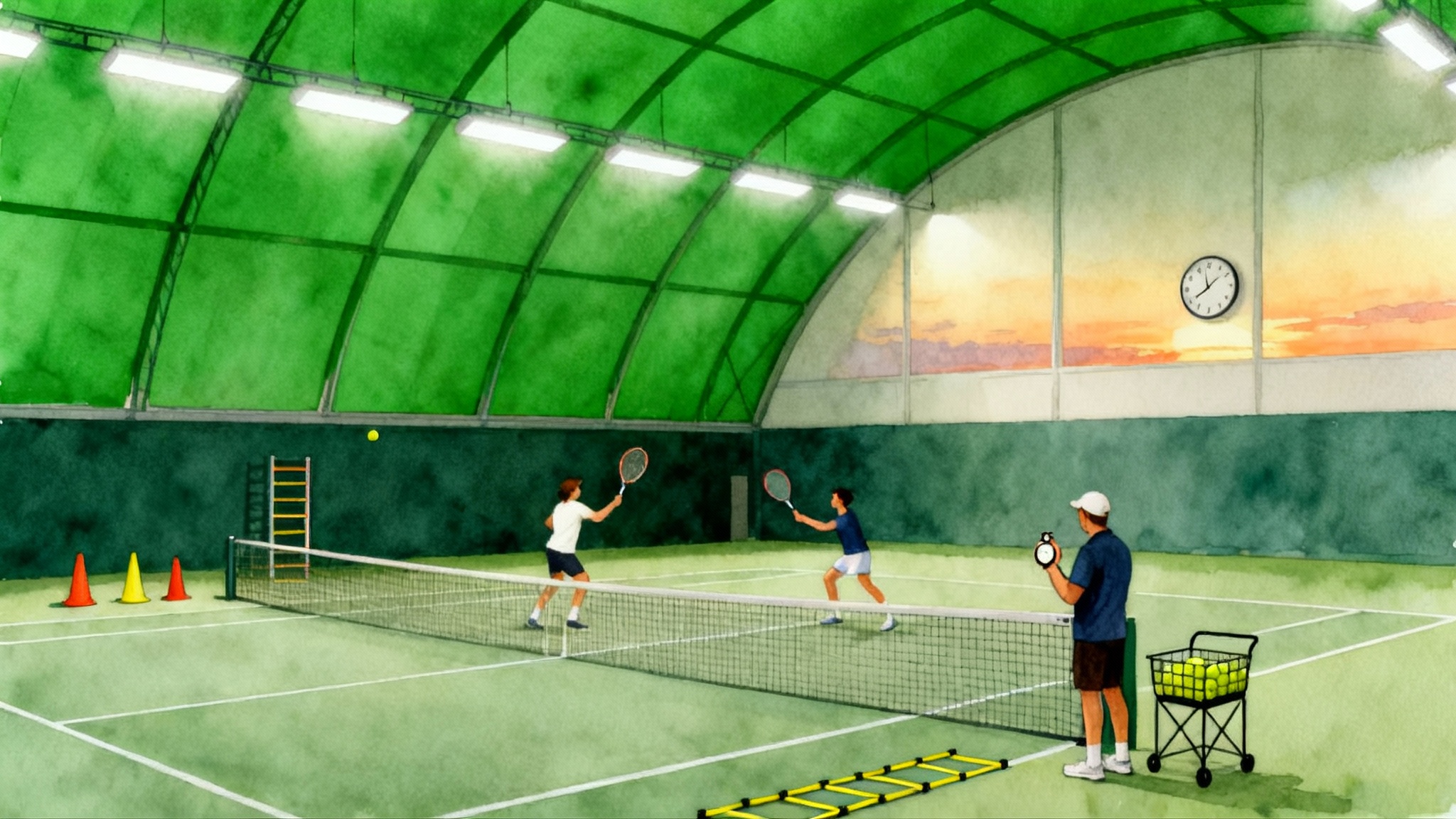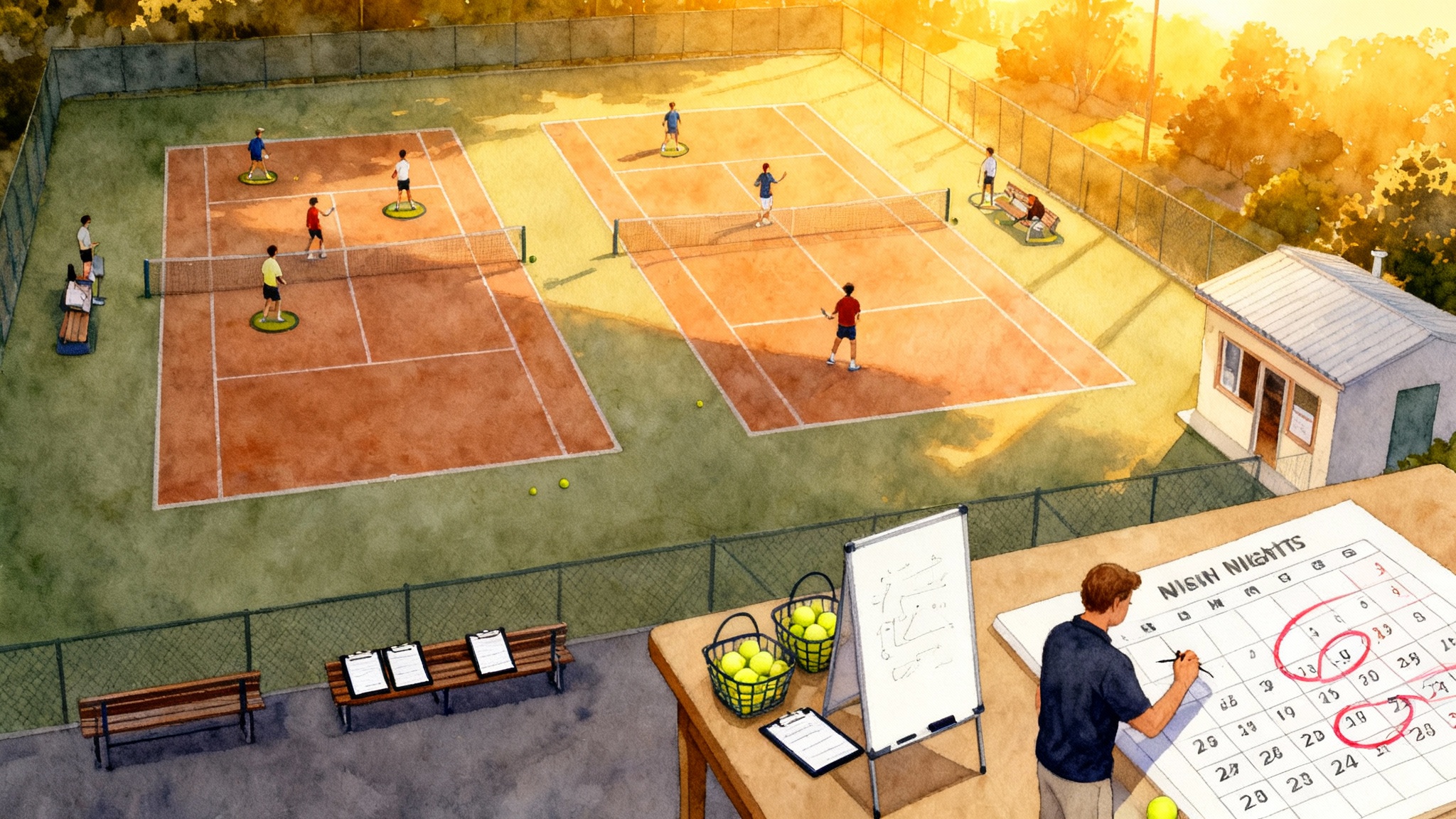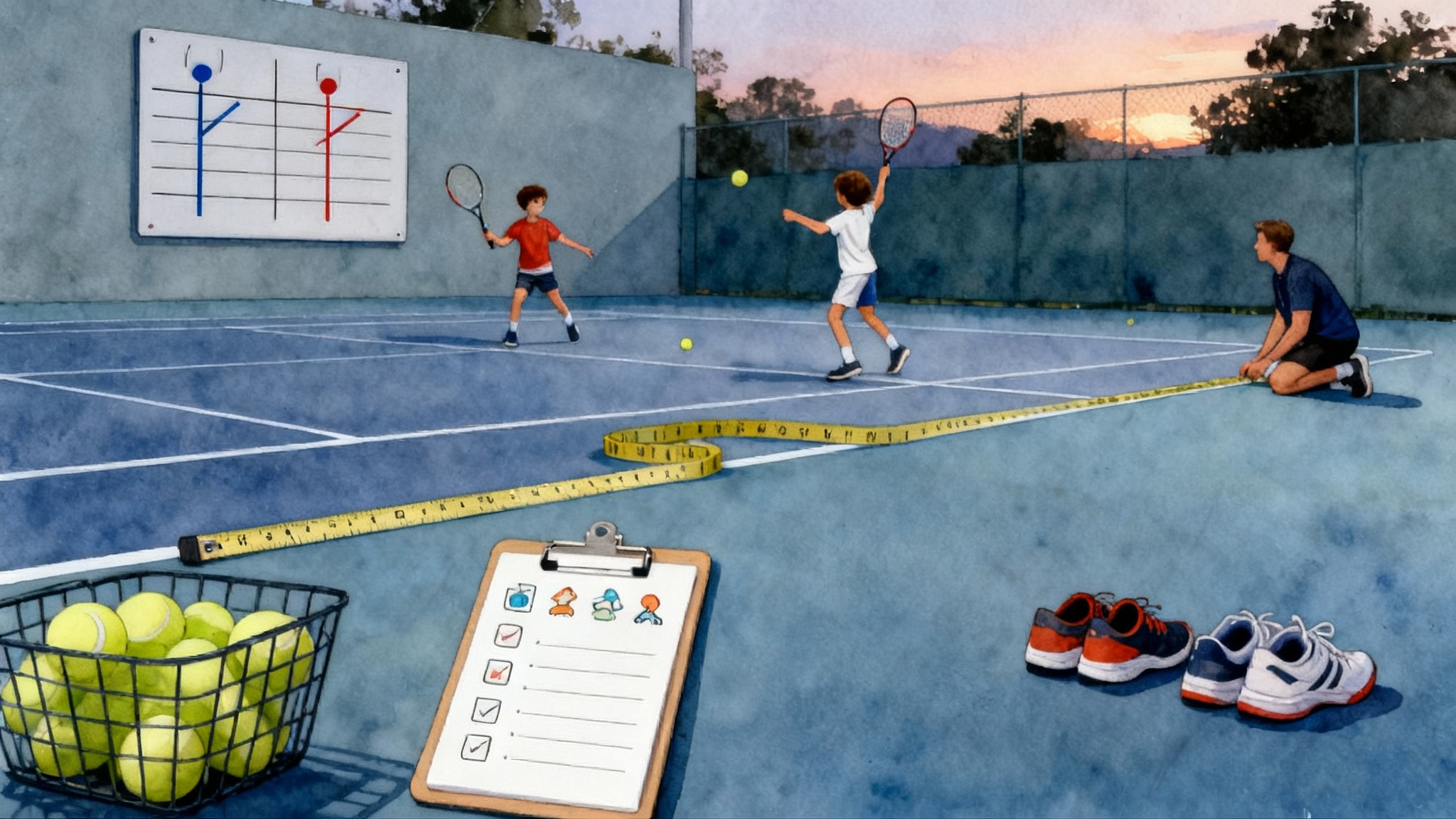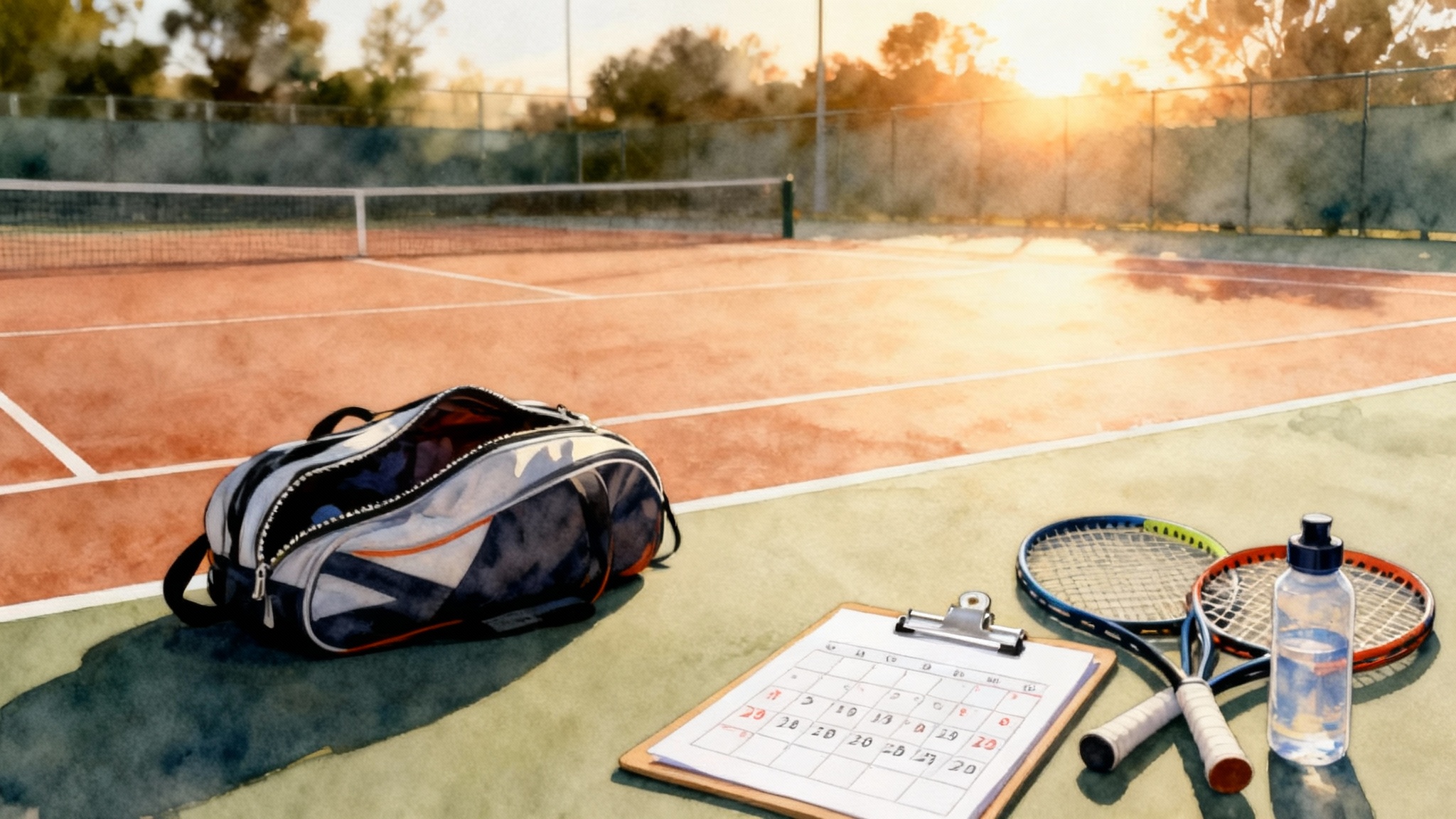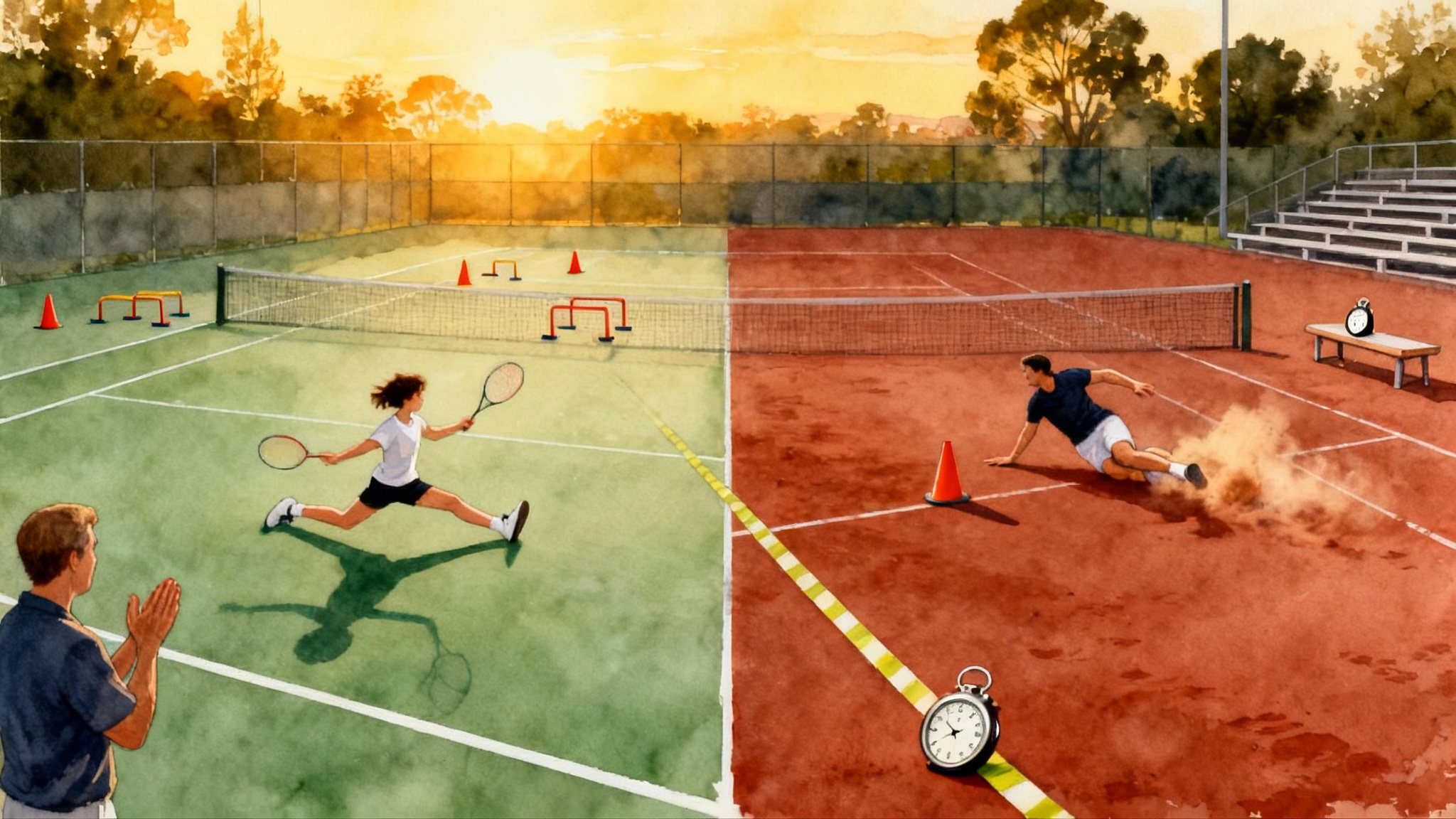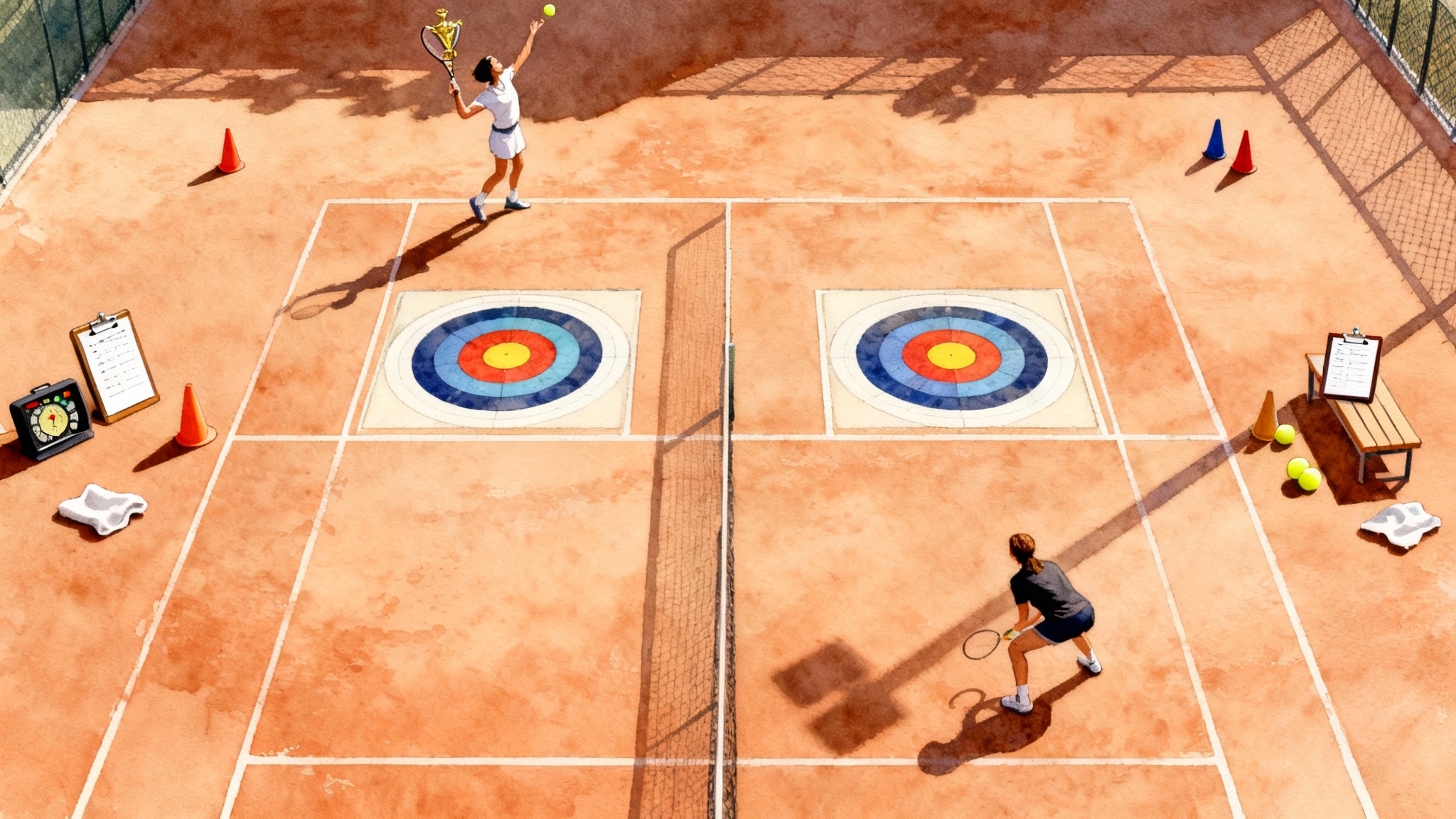Return of Serve 2025: Reads, Split Timing, Patterns for All Ages
A step by step playbook for juniors, parents, and adult players. Learn to read the toss and contact, time the split step, choose the right stance, and build neutralizing and aggressive return patterns with a four week plan.
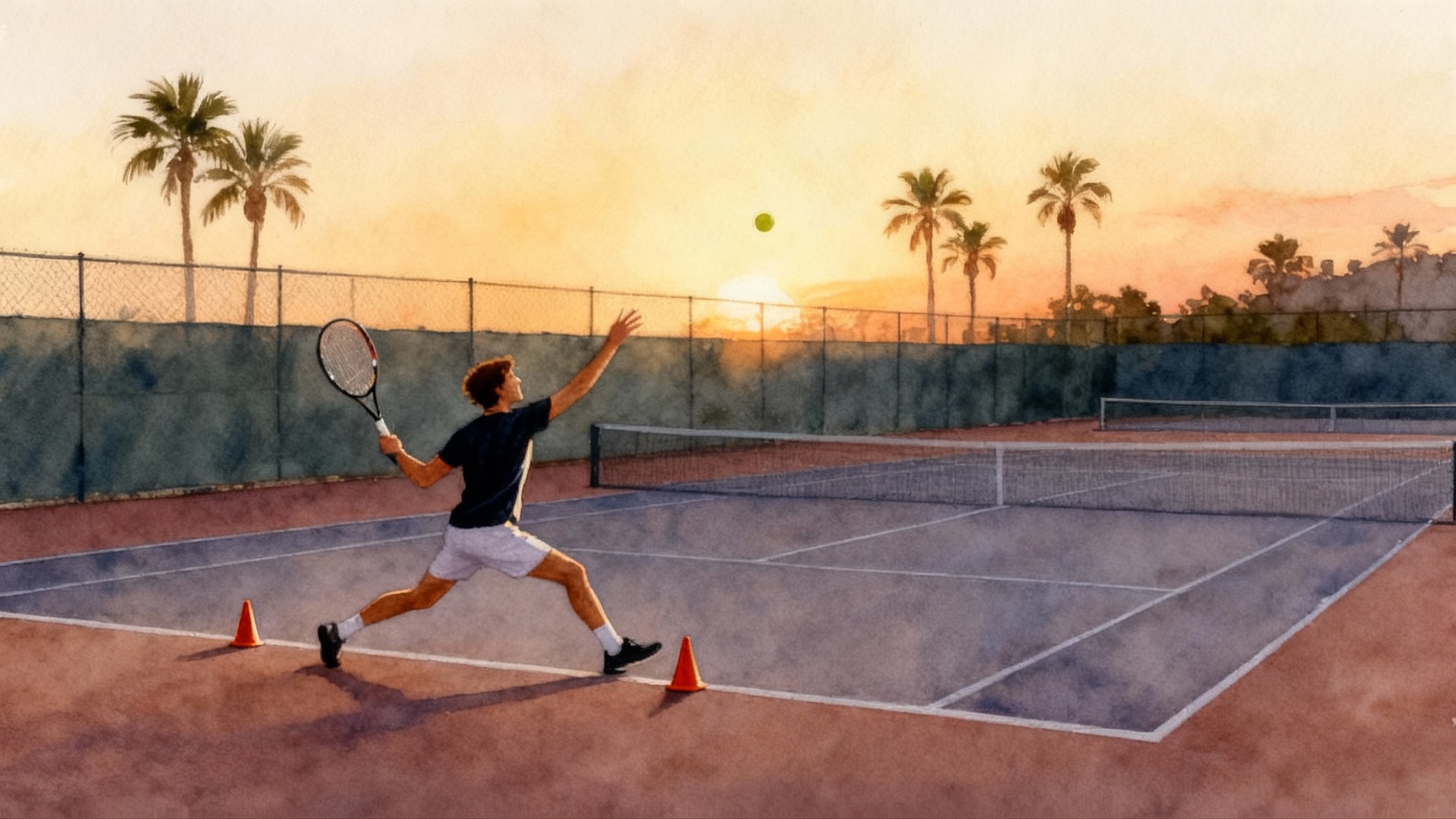
Why the return decides more than you think
In most matches, the return of serve touches every game and shapes momentum. A playable return turns the server's advantage into a neutral rally. A precise, well timed return can steal the initiative outright. Yet most players spend more time basket feeding groundstrokes than practicing return reads, split timing, and stance choices. This guide fixes that with a clear, three level progression you can run on any court. It includes a four week plan, printable checklists for parents and coaches, and details on optional small group Return Lab sessions at Celsius Tennis Academy in Sarasota.
Who it is for:
- Juniors who need repeatable habits that hold up under pressure
- Parents and coaches who want simple, on court checkpoints
- Adult players who want smarter, faster improvements without adding new strokes
Pro tip: if you also want to upgrade your second serve scouting and pressure drills, pair this article with our guide to second serve patterns and drills.
The three level system at a glance
- Level 1: Reads and split timing. Learn what to watch, when to move, and how to land the split so your first step is automatic.
- Level 2: Stance and strike windows. Match your stance to serve speed and location, and build a reliable contact point.
- Level 3: Patterns for singles and doubles. Choose neutralizing or aggressive patterns, then layer aim, height, and depth for predictable outcomes.
Each level has junior and adult cues plus a parent or coach checklist.
Level 1: Reads and split timing
What to read before the ball crosses the net
Use a simple sequence: toss hand, shoulder line, contact height, racquet path, first ball flight.
- Toss hand: if the server's toss hand drifts to their right for a right hander, expect slice or a wide serve. If it stays more above the head, expect T or body.
- Shoulder line: closed shoulders usually point to a T serve. Open shoulders often pair with a wide serve.
- Contact height: higher contact often pairs with flatter pace. Lower or farther back contact often pairs with kick or slice.
- Racquet path: up and across suggests kick. Around and across suggests slice.
- First ball flight: the first two meters tell the truth. As soon as the ball leaves the strings, confirm wide, body, or T and commit.
Juniors cue: say the lane in your head right after contact: "wide," "body," or "T."
Adults cue: soft eyes on the server's upper body until contact, then sharpen on the ball.
Split step timing you can trust
Your goal is to land the split as the ball leaves the server's strings. If you land earlier, you wait flat footed. If you land late, the ball is already on you.
Simple rule: begin your tiny hop when the server starts the upward swing, and land at contact. Your heels kiss the court, but your weight stays on the front of your feet so your first step can go in any direction.
Common distances and adjustments:
- On fast first serves: reduce split height. Think two centimeters off the ground, land light, and take a small first step.
- On second serves: allow a slightly bigger split and a longer first step forward to take time away.
- Against a left hander: expect the wide swing to your backhand on the ad side and to your forehand on the deuce side.
Parent or coach checklist for Level 1:
- Did the player start moving before the ball crossed the net, not after?
- Did the player land the split as the ball left the strings?
- After landing, did the player take the first step toward the ball within one count?
- Is the toss read spoken or signaled before the bounce crosses the service line?
Level 2: Stance and strike windows
Choose the stance that fits the serve
You have three simple stances for returns. Practice all three so you can change without thinking.
- Square stance: feet more parallel to the baseline. Best for slower second serves or T serves where you want to drive through the ball.
- Semi open stance: front foot slightly turned and back foot behind. Best all around choice for most serves because it blends stability and quick recovery.
- Open stance: both feet pointing more toward the side fence. Best for fast serves at the body or wide where you need a short swing and quick recovery.
Guideline by location:
- Wide: semi open or open, short back swing, recover to the middle quickly.
- Body: open stance with a compact turn, elbows away from ribs to keep the racquet free.
- T: square or semi open, step through if you have time and drive deep.
Strike windows and contact points
Think in windows, not single points.
- Forehand return: ideal window is from belly button height to chest height, in front of the front hip. If the ball is still rising, shorten the swing and aim deep middle. If it is dropping, lift with legs and go high crosscourt.
- Backhand return with two hands: window from hip to chest, out in front of the front knee. Keep the back elbow away from your body so the racquet head does not get stuck.
- One handed backhand return: use a smaller turn and a firmer wrist. If pace is heavy, consider a block or chip with a short follow through and aim deep middle.
Junior cue: show the racquet face to the ball early like a shield, then nudge forward.
Adult cue: think short, flat letter C shape for the swing, not a big loop.
Parent or coach checklist for Level 2:
- Was the stance matched to serve speed and location?
- Did the player keep a small swing on first serves and lengthen only on short second serves?
- Did contact happen in front, not beside the body?
Level 3: Patterns for singles and doubles
Neutralizing patterns for singles
Use these when the serve has pace or moves you. Your goal is height, depth, and time.
- Deep middle blocker: block to the middle third at shoulder height. This steals angles from the server and buys recovery time.
- High heavy cross: lift crosscourt above net height to land deep. Safer net clearance with a long diagonal court.
- Chip float to the backhand: slice that lands deep and slow to the server's backhand. Expect a shorter next ball you can attack.
Aggressive patterns for singles
Use these when you read location early or the serve is slow.
- Run around forehand inside out: if you read a backhand serve, shuffle around and drive forehand to the server's backhand corner. Recover diagonally.
- Backhand line strike: on a body serve to the backhand, firm the wrist and drive down the line to the open court.
- Step in drive through the T: on a short T serve, square stance, step through, and aim big target deep middle.
Targeting rule: if you steal time, choose big targets. Deep middle or deep cross wins more than corner hunting on returns.
Doubles specifics
Formation reads:
- Two back: larger gaps down the middle. Favor a solid drive to the middle net strap area.
- Standard one up one back: lift crosscourt at the feet of the baseliner or drive through the middle behind the server.
- I formation or Australian formation: pick a side early and commit. If the net player moves, lift high cross or drive at the backhand hip of the server coming in.
Doubles patterns:
- Neutralizing: chip or block crosscourt deep with height, then follow with a lob on the next ball to test overheads.
- Aggressive: drive at the returner's inside hip across court or punch line at the net player's outside shoulder if they lean.
Parent or coach checklist for Level 3:
- Was the chosen pattern neutralizing or aggressive based on the read, not at random?
- Did the player aim big targets when rushing and smaller targets only when balanced?
- In doubles, did the return clear the net player's reach or intentionally jam the body?
The four week Return Builder plan
Three sessions per week, 60 to 75 minutes. Use any court, a basket of balls, and a partner or coach who can serve or toss from the baseline.
Progress measure to track each week:
- First serve return in play rate: goal 65 to 75 percent
- Second serve return in play rate: goal 80 to 90 percent
- Deep middle percentage: goal 50 percent of all returns land past the service line and inside the center third
- Aggressive pressure points created: count points where your return puts the server on defense or draws a short ball within two shots
Week 1: Vision and timing
- Warm up 10 minutes: mini tennis, then shadow splits while a partner pantomimes a service motion. Land your split at imaginary contact.
- Read drill 15 minutes: partner serves at 50 percent pace to all locations. You call "wide," "body," or "T" at their contact, then block deep middle. Focus on the call, not power.
- Split and first step 15 minutes: partner serves only wide. You land the split at contact, then take one explosive step and block crosscourt. Switch sides.
- Stance sampler 15 minutes: five balls each with square, semi open, and open stances. Notice recovery time and balance.
- Score game 10 minutes: race to 11 returns in play on first serves. If you miss long, subtract one. If you miss in the net, subtract two. Depth matters.
Week 2: Stance and strike windows
- Warm up 10 minutes: add slow second serves while you step forward into a square stance and drive through the court.
- Body serve solutions 15 minutes: coach serves at the body. You use open stance and short swing. Aim deep middle. Count jammed contacts. Reduce jammed count each set.
- Wide serve solutions 15 minutes: move with a crossover first step and semi open stance. Block or lift crosscourt.
- Contact ladder 15 minutes: place three cones in front of you at 30 centimeters intervals. Your contact should happen past cone two. If contact drifts behind, shorten the swing.
- Score game 10 minutes: first to 7 deep returns past the service line. If the return lands short, it does not count.
Coach note: for targeted second serve work, integrate these sessions with second serve patterns and drills.
Week 3: Singles patterns
- Warm up 10 minutes: half speed serving and returns to big deep targets.
- Neutralizing set 20 minutes: server at full pace. You play only deep middle or high heavy cross. One point per return that forces a rally ball beyond the service line.
- Aggressive set 20 minutes: second serve focused. You run around three times per game and try a backhand line strike twice per game. Keep a log.
- Pressure ladder 10 minutes: start love 30 each game as the returner. Your goal is to win two of three games against even level opposition.
Week 4: Doubles patterns and match rehearsal
- Warm up 10 minutes: stretch, short returns, and communication if paired.
- Doubles lanes 15 minutes: with a partner at net, aim crosscourt at the baseliner's feet. Then aim middle gap. Switch sides every 10 balls.
- I formation read 10 minutes: server's partner signals and moves after contact. You commit early to a side and execute lift or drive.
- Mixed pattern set 20 minutes: play games to 7 points starting with serve and return only. After the return, rally is over. Focus on quality of the first strike.
- Final audit 10 minutes: retest return in play rates, deep middle percentage, and pressure points created. Compare to Week 1.
Film it to speed the gains
Use a phone from behind the baseline, capture eight returns per side, and review lane calls, split timing, stance, and depth. If you need a simple setup and workflow, follow our step by step video analysis guide.
Printable checklists
Print these and keep them in your bag.
Player pre point checklist:
- Breathe and set the split. Tell yourself the lane: wide, body, or T.
- Choose stance based on expected serve: square, semi open, or open.
- Pick a big target: deep middle or deep cross.
Player during point checklist:
- Land the split at server's contact.
- Short swing on first serves. Lengthen only on slower second serves.
- Eyes on ball after contact, not on the server.
Player post point checklist:
- If late, start your hop earlier. If jammed, give more space and open your stance.
- If long, lower net height target. If in the net, raise your height by two racquet strings.
Parent or coach observation sheet:
- Was the lane call on time? Yes or no
- Split landed at contact? Yes or no
- Stance matched serve location? Yes or no
- Contact in front of body? Yes or no
- Target deep middle used under pressure? Yes or no
Doubles return checklist:
- Opponents' formation identified early
- Crosscourt lift at baseliner's feet as default
- Middle drive used when net player cheats
- Communication with partner before point
Small group Return Lab at Celsius Tennis Academy
If you are near Sarasota, Celsius Tennis Academy in Sarasota hosts optional small group Return Lab sessions. Groups are four to six players per court for 90 minutes. Sessions focus on toss and contact reads, split timing under pace, stance decisions by serve location, and live pattern play for singles and doubles. Players receive film clips from a fixed phone angle, plus a one page action plan based on the checklists above. Ask the front desk for current dates and availability.
What to expect in a session:
- Warm up with split timing audit and quick corrections
- Live serve blocks that progress from reads to pattern execution
- Competitive games that score only return quality and first strike pressure
- Take home drills that plug directly into the four week plan
Common mistakes and quick fixes
- Landing late: start your mini hop earlier, not higher. Lower split height and think tap, not jump.
- Getting jammed: stand ten centimeters farther back, open the stance, and shorten the backswing.
- Floating short: raise your contact and aim deeper by feeling the follow through finish on the outside of your shoulder.
- Missing wide on run around forehands: begin the move earlier and set the outside foot before swinging.
- Doubles net player poaching every ball: aim higher crosscourt with more margin or drive firmly through the middle until they back off.
Gear and simple setup
- A small tripod for your phone to film from behind the baseline. Film eight returns per side and review lane calls, split timing, and stance.
- Two cones for the contact ladder and three chalk dots for deep middle targets.
- A ball basket and a simple metronome app to help rhythm on the split if timing drifts.
How to keep the gains after four weeks
- Keep one return only session each week. Twenty minutes is enough to maintain reads and timing.
- Track three numbers every month: first serve in play rate, second serve in play rate, and deep middle percentage.
- In matches, label each return point as neutralizing or aggressive during changeovers. If you cannot remember, you probably did not choose deliberately.
A closing thought you can use on your very next return
You do not need a new stroke to return better. You need a better moment. Read the toss and shoulders, land the split as the ball leaves the strings, pick the stance that fits the serve, and send the ball to a big, deep target. With that sequence, your return becomes a habit that holds up under pressure, and your opponent feels the score tilt before the rally even starts.

